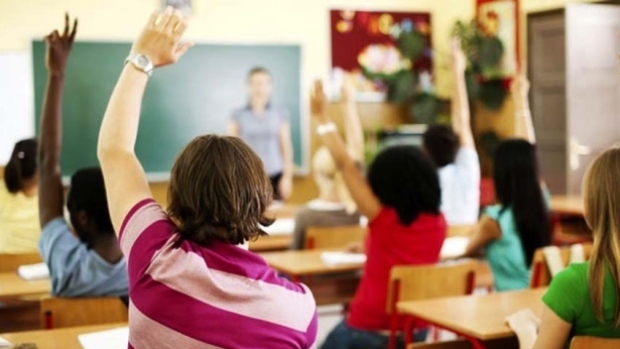América del Norte/Canadá/26 de Agosto de 2016/Autor: Justin MacElroy/Fuente: CBC News
RESUMEN: Un nuevo informe del Centro Canadiense de Políticas Alternativas argumenta que los fondos para los estudiantes se ha reducido en un 25% durante los últimos 15 años. Titulado, «¿Cuál es la verdadera historia detrás de la crisis de financiación de la educación antes de Cristo?», El informe CCPA hace el caso, utilizando una variedad de métricas, afirmando que la financiación de la educación pública ha disminuido constantemente desde el A.C. Partido Liberal que tomó el poder en 2001. «La caída en el gasto público en la educación – y el gasto público en general – como parte de nuestra economía no es un accidente», escribe Alex Hemingway, autor del informe y analista político de financiación pública de la organización. «Más bien, es una consecuencia de las políticas específicas como los recortes de impuestos que ofrecen el mayor partido a los ciudadanos de la provincia más ricos – en el proceso de reducción de la capacidad para realizar inversiones importantes en áreas como la educación.» Los funcionarios del gobierno dicen que los fondos de educación pública ha aumentado de $ 3.9 mil millones en 2001 a $ 5.1 mil millones en el año fiscal en curso, a pesar de que hay 70.000 menos estudiantes en el sistema.
A new report by the Canadian Centre for Policy Alternatives argues funding for B.C.’s students — as a share of GDP — has dropped by 25% over the last 15 years.
Entitled, «What’s the real story behind BC’s education funding crisis?», the CCPA report makes the case, using a variety of metrics, that funding for public education has declined steadily since the B.C. Liberal Party took power in 2001.
«The drop in public education spending — and overall public spending — as a share of our economy is not an accident,» writes Alex Hemingway, the report’s author and the organization’s public finance policy analyst.
«Rather, it’s a consequence of specific public policies like tax cuts that deliver the biggest bang to the richest British Columbians — in the process reducing the capacity to make critical investments in areas like education.»
GDP and per student funding
The report uses two metrics to highlight its argument — provincial K-12 funding as a percentage of B.C.’s GDP, and per student funding in public elementary and secondary schools.
«K–12 funding has fallen steadily from 3.3% of our province’s Gross Domestic Product in 2001 to a projected 2.5% in Budget 2016 — which is a 25% decline,» it says.
However, Craig Riddell, a research professor at UBC’s faculty of economics, says that decline may not be the best metric.
«Because the age structure of the population is changing — fewer school-aged children, more adults, especially older adults— we would expect a shift in expenditure even if priorities haven’t changed,» he said.
«In B.C. as in other provinces, expenditure on health care is crowding out expenditure in other provincial areas of spending.»
Riddell says a fairer metric is funding per student. The CCPA report points to a Statistics Canada report that shows in 2011, the amount of money spent per student in public elementary and secondary schools in B.C. was $11,832 — the second lowest in Canada.
The end result, Hemingway argues, is chronic underfunding that forces school boards to cut programs, and in some cases, axe whole schools.
«School closures, disjointed one-off funding announcements and school board budget crises are not necessary or inevitable,» the report says.
«In B.C., the numbers show we can afford to invest strongly and stably in education. Underfunding is a political choice.»
«Student outcomes are some of the best in the world»
The provincial government doesn’t directly dispute the charts the CCPA uses — but argues the report cherrypicks misleading indicators.
«The CCPA ignores the most important indicators for the education system — B.C.’s student outcomes are some of the best in the world,» said a Ministry of Education spokesperson in a statement.
Government officials say public education funding has gone up from $3.9 billion in 2001 to $5.1 billion in the current fiscal year, even though there are 70,000 fewer students in the system.
The report comes after months of education funding announcements from the provincial government, from buses to rural schools.
Fuente: http://www.cbc.ca/news/canada/british-columbia/education-funding-british-columbia-ccpa-2016-1.3735255






 Users Today : 290
Users Today : 290 Total Users : 35459885
Total Users : 35459885 Views Today : 465
Views Today : 465 Total views : 3418437
Total views : 3418437